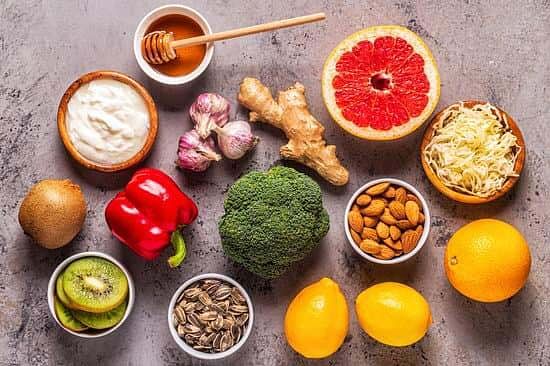What's missing from your diet?
Does your diet have all the essential fats, proteins, vitamins and carbohydrates in the right proportions?

What’s a healthy diet?
In today’s time, when diseases are on a rampant spread, consuming a ‘healthy diet’ has become the most thought of and discussed topic across age groups. Most of us know what we should not have in our diet, but are we aware of the healthy nutrients that should definitely be a part of our diet? It’s time we ask ourselves, are we consuming nutritionally complete meals? We need to shift our focus from excluding and focus our energies on including the foods that nourish our bodies. A healthy balanced diet is a diet that has all the five food groups in the right percentages and quantities spread throughout the day. They provide five essential nutrients for our body cells to grow and thrive.
Our never-ending issue of time constraint and hectic lifestyle causes us to miss out on vital nutrients as we opt for easy to cook and serve foods that are packaged. This need for convenience damages our health in the long run and causing diseases. We ignore the importance of a balanced diet and try to opt for easy fixes; crash diets that can give us fast results. What we do not understand is there are no quick fixes in life. The diet that is right for you must be sustainable. Your answer to right nutrition lies in including all food groups in your diet like carbohydrates, proteins, fats, vitamins, minerals, and water, with a focus on controlling portion size and timing.
All food groups perform their separate functions like carbohydrates provides us with energy, protein helps in building muscles and enzymes, fat provides us with insulation and forms hormones, vitamins and minerals perform various functions such as maintain healthy eye, skin, hair, bone, and nerves. These essential functions are best performed if you consume the right types of food from each food groups using the right cooking method. There are essential food groups that are ‘must-haves’ in your diet to reach the following goals
Choosing the right protein
Since we come from an agricultural economy, we have carbohydrate centric diets. Decades ago, farmers grew surplus grains and animal meat was looked down upon as animals helped in farm harvest. Eventually, availability, accessibility, and beliefs shaped our diet. Even though our lifestyle has become sedentary we follow the same diet. Replacing carbohydrates with proteins is crucial to make this change. Firstly, understand the protein sources; protein-rich foods comprise of animal sources such as chicken, fish, meat, egg, milk and milk products, and plant sources such as dals, pulses, seeds, nuts. Secondly, how can you inculcate these to your existing diet.; First cardinal rule is to always have more protein than carbohydrates (protein: carbohydrates; 2:1). In an existing meal e.g. 3 rotis with 1 bowl sabzi, modified as 2 besan flaxseed roti + 1 bowl rajma+ ½ bowl sabzi. Thirdly, understanding why you need to consume protein foods more; protein foods help keep you full longer, protein slower the release of sugars into the blood which leads to lesser fat deposition, and burns fat.
Increase your fiber intake naturally
Do you know fibre is also a carbohydrate? Fibre is called a complex carbohydrate, a carbohydrate that cannot be broken down by the body but crucial for the growth of gut bacteria, fat loss, elimination of waste products, increased satiation, provides zero calories and prevents obesity. Interestingly we very often overlook fibre from raw salads and fruits as being an essential part of our diets. It can be traced back to the need to cook vegetables before it’s consumed and fruits being expensive and subject to availability. Cooked vegetables tend to lose their minerals, vitamins, and fibre which breakdown in the cooking process. Start by adding 1 bowl of raw salad along with your breakfast, lunch, and dinner and two different fruits in between your meals. Raw vegetables can comprise of carrots, tomatoes, cucumber, coriander, mint leaves, bell pepper, and radish, and fruits can include papaya, melons, pomegranate, grapes, pineapple, apple, pear, oranges, and sweet limes. Fibre-rich and bright coloured vegetables and fruits inherently fill you up with vitamins, minerals, and antioxidants.
Including good fats to your diet is essential
It’s high time we bust the myth that all fats do not make us fat. Fats present in fried, processed, bakery, preserved, fast foods are bad fats. Good fats are essential for survival; they help in the secretion of hormones, protect the brain and nervous system, absorb vitamins, and help lose weight. Good fat consumed in small quantities provide immense benefits to your health and prevent diseases. They include nuts (almonds, walnuts, cashews, and pistachios), avocado, seeds (pumpkin, sunflower, sesame, chia, flax), ghee, oils (mustard, olive, flax, rice bran, sesame, peanut, coconut). Incorporate nuts and seeds in rotis, dhals, or mid meals, serving size one handful of nuts and seeds combined. Oil intake should be restricted to 3-4 tsps per day per person.
Permanent lifestyle change is only possible by making diet modification simpler, achievable, and beneficial. Adopting these dietary changes is a guaranteed method for achieving a healthy lifestyle.

